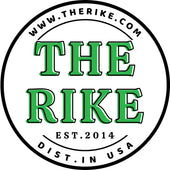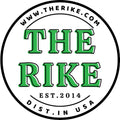The Healing Properties of Gotu Kola and Other Essential Herbs
Herbal medicine has been a cornerstone of traditional medicine systems for centuries, offering natural remedies to various ailments. Among the myriad of herbs available, Gotu Kola (Centella Asiatica) stands out for its remarkable healing properties. This article will delve into Gotu Kola, its uses, benefits, and explore additional essential herbs known for their healing properties.
1. Introduction to Gotu Kola
Gotu Kola, often referred to as the herb of longevity, has been used in Ayurvedic and Traditional Chinese Medicine for thousands of years. It is a small, herbaceous plant native to Asia, growing in wetlands and marshes. The leaves of Gotu Kola are typically used in herbal preparations to promote various health benefits.
1.1 Historical Significance
Traditionally, Gotu Kola was used to treat wounds, improve mental clarity, and enhance overall wellness. In ancient Chinese medicine, it was considered a pathway to improved consciousness and was used by monks to heighten meditation and spiritual practices.
2. Health Benefits of Gotu Kola
Gotu Kola is packed with beneficial compounds such as triterpenoids, flavonoids, and vitamins that contribute to its impressive healing properties.
2.1 Skin Health
Gotu Kola is renowned for its skin-healing properties. It promotes collagen production and improves the strength and elasticity of the skin. It is effective in treating conditions like:
- Wounds and burns
- Psoriasis and eczema
- Stretch marks
2.2 Cognitive Function
Studies suggest that Gotu Kola can enhance cognitive function and memory. It is believed to improve blood circulation in the brain, making it useful for:
- Boosting memory retention
- Reducing the risk of cognitive decline
2.3 Anxiety and Stress Relief
Gotu Kola has adaptogenic properties that help the body cope with stress and anxiety. It may promote a sense of calm and well-being by modulating stress hormone levels.
2.4 Circulatory Health
This herb supports healthy blood circulation and can aid in reducing varicose veins, swelling, and leg cramps.
3. Other Essential Healing Herbs
3.1 Ashwagandha
Ashwagandha (Withania somnifera), often known as Indian ginseng, is another pivotal herb in Ayurveda. It is famed for its adaptogenic properties, helping to reduce stress and enhance energy levels. In addition to its relaxing effects, it is known to:
- Strengthen the immune system
- Enhance physical performance
- Support thyroid function
3.2 Turmeric
Turmeric (Curcuma longa), a powerful anti-inflammatory herb, contains curcumin, which is believed to have potent anti-inflammatory and antioxidant effects. Turmeric is utilized for:
- Reducing inflammation in conditions like arthritis
- Enhancing liver detoxification
- Providing immune system support
3.3 Ginger
Ginger (Zingiber officinale) is a versatile herb with numerous therapeutic applications. Known primarily for its anti-nausea properties, ginger is also effective in:
- Alleviating digestive issues
- Relieving muscle and joint pain
- Supporting cardiovascular health
3.4 Echinacea
Echinacea is widely known for its immune-boosting properties, making it a popular choice for preventing and treating colds and flu. It works by:
- Stimulating the immune response
- Reducing inflammation
- Fighting off infections
3.5 Peppermint
Peppermint (Mentha piperita) is not only a refreshing herb but also has several medicinal properties. It is beneficial for:
- Soothing digestive discomfort
- Relieving headaches and migraines
- Clearing respiratory pathways
4. Combining Gotu Kola with Other Herbs
Combining Gotu Kola with other essential herbs can create synergistic effects, enhancing overall health benefits. Popular combinations include:
- Gotu Kola and Ashwagandha: A blend for stress relief and cognitive enhancement.
- Gotu Kola and Turmeric: For skin health and inflammation reduction.
- Gotu Kola and Ginger: To improve circulation and digestion.
5. How to Use Gotu Kola and Other Herbs
Gotu Kola and other healing herbs can be consumed in various forms, including:
- Tinctures: Concentrated herbal extracts.
- Teas: Infusions made from dried leaves.
- Powder: Often added to smoothies or capsules.
- Topicals: Creams and ointments for skin applications.
5.1 Dosage Recommendations
While herbal medicine is generally safe, it is crucial to follow recommended dosages. For Gotu Kola, typical dosages are:
- 500 mg to 1,000 mg per day of standardized extract
- Tea form can be consumed 2-3 times daily
Consult with a healthcare professional before beginning any herbal regimen.
6. Precautions and Side Effects
Gotu Kola and other herbs, while beneficial, can have side effects and may interact with medications. Some precautions include:
- Pregnant or breastfeeding women should avoid Gotu Kola.
- Individuals with liver disease or taking anticoagulants should consult a doctor.
7. Conclusion
Gotu Kola and other essential herbs offer an extensive range of healing properties that can enhance health and well-being. Their natural origins and proven benefits make them a valuable addition to holistic health practices. Always consult with a healthcare professional before incorporating new herbs into your wellness routine to ensure they align with your specific health needs.
8. References
- Bhavsar, S. K., & Bhatter, B. N. (2016). "Pharmacological properties of Gotu Kola." Journal of Pharmacognosy and Phytochemistry.
- Chaudhary, S., et al. (2017). "A review on the medicinal potential of Ashwagandha." Journal of Ethnopharmacology.
- Hewlings, S. J., & Kalman, D. S. (2017). "Curcumin: A Review of Its' Effects on Human Health." Foods.
- Vogler, B. K., & Pittler, M. H. (2007). "Echinacea: A systematic review of its effectiveness in treating upper respiratory tract infections." Journal of Family Practice.





Leave a comment